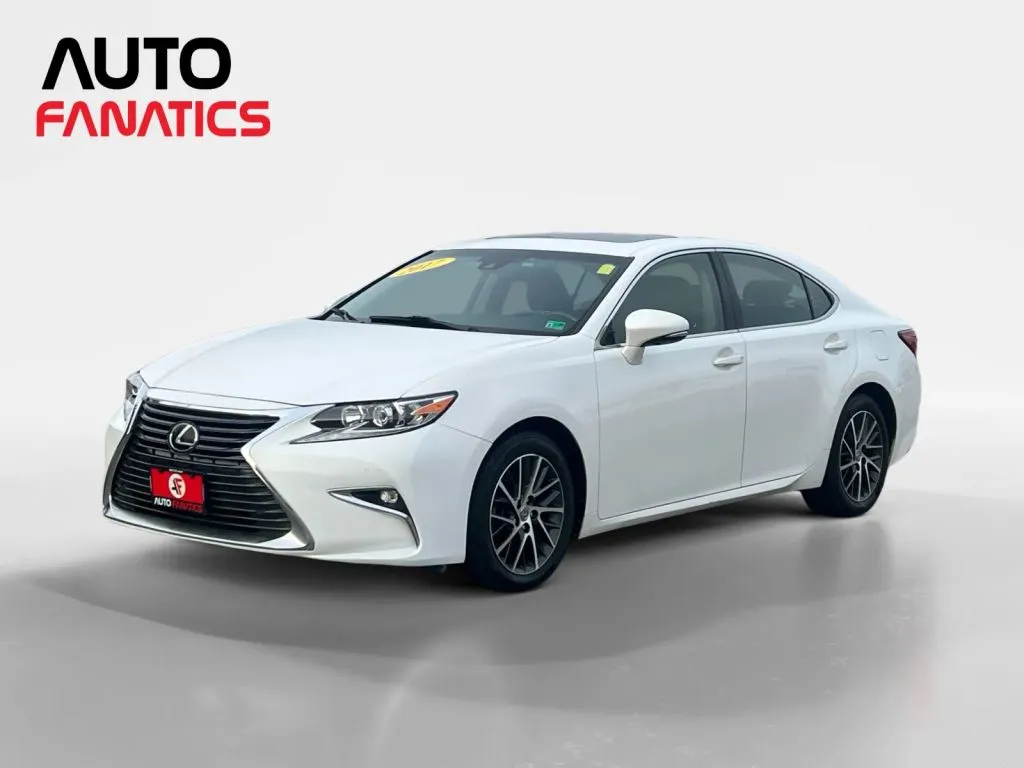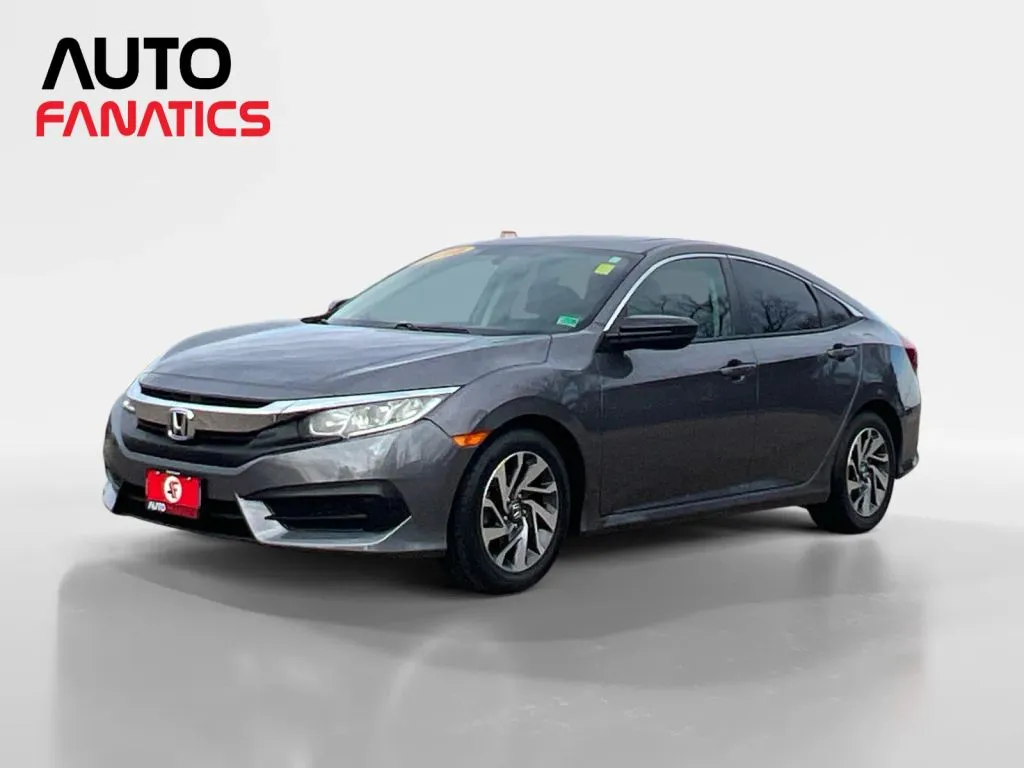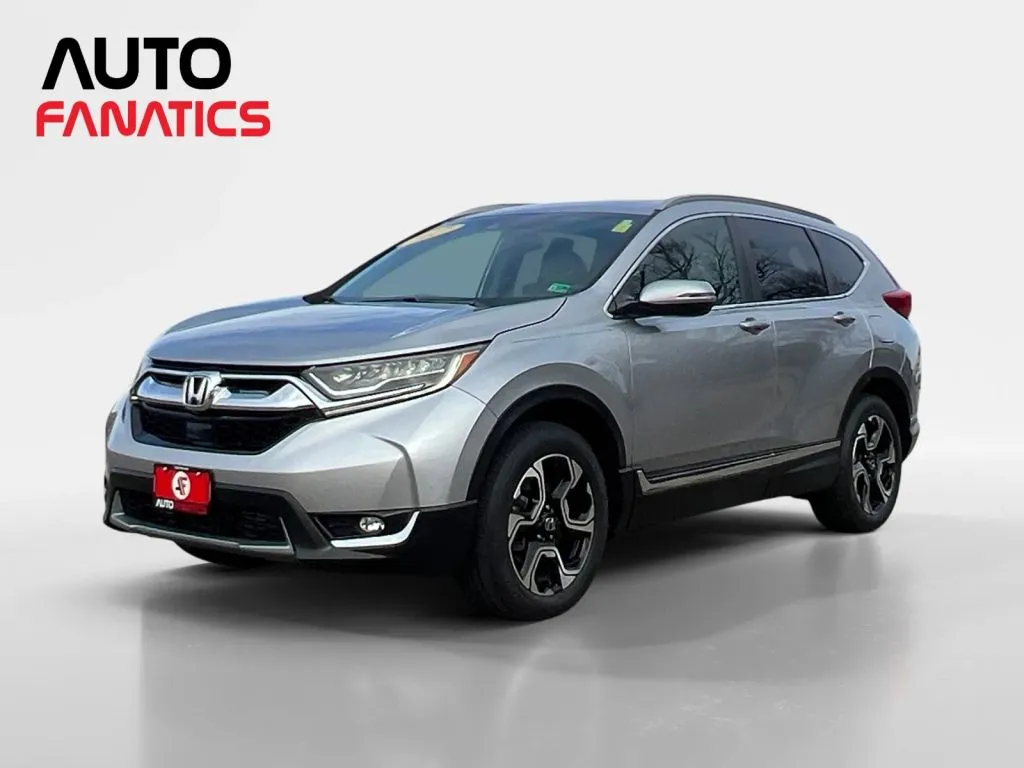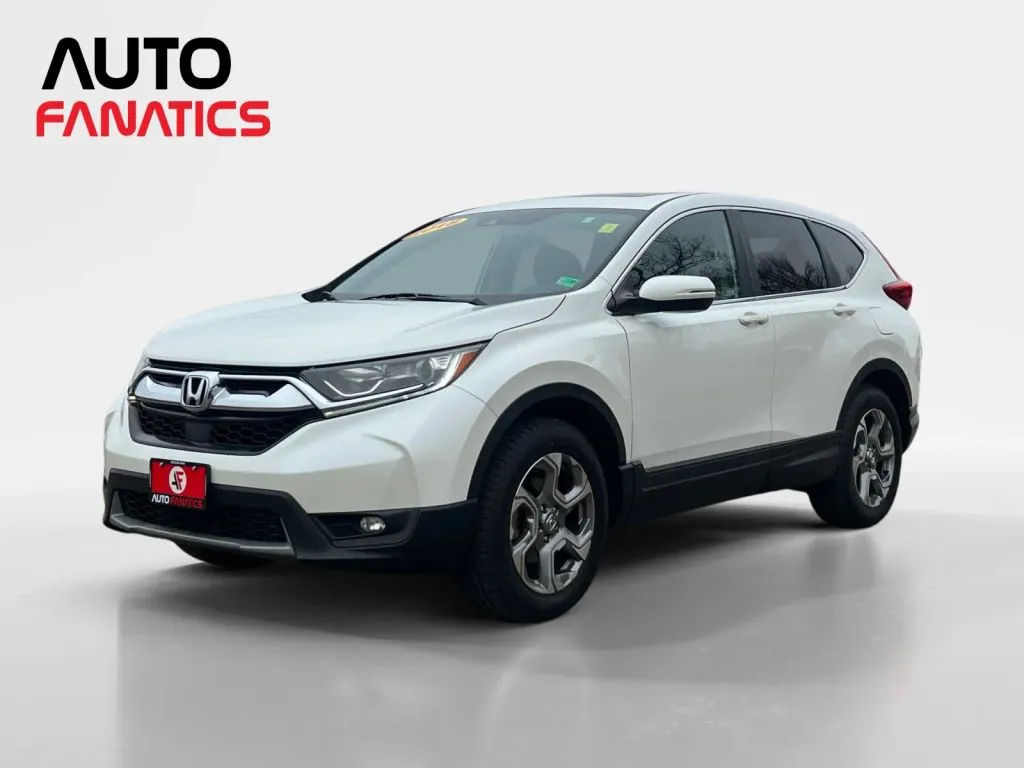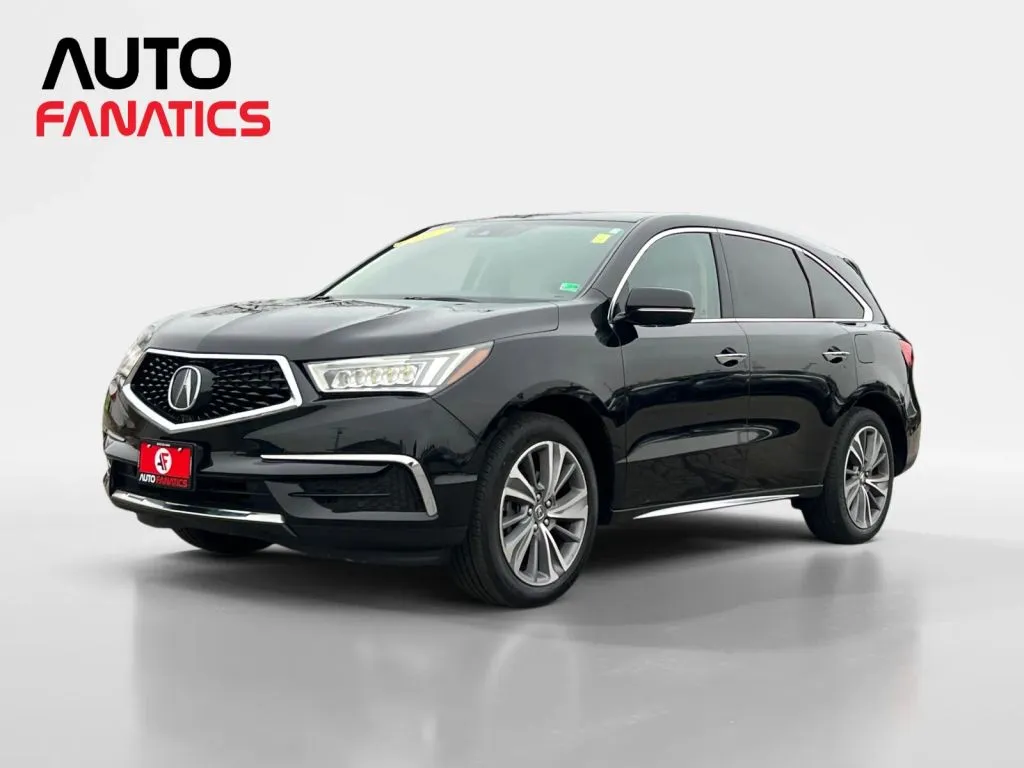How to Use a Used Car Loan Payment Calculator
Confidence is your best accessory when shopping for a car. Walking onto a lot already knowing your budget and what monthly payment works for you changes the entire dynamic. It shifts the focus from worrying about finances to the fun part: finding the perfect vehicle. The secret to this confidence isn't complicated; it’s a powerful, easy-to-use tool. A used car loan payment calculator gives you the clarity you need to shop smart. You can explore different scenarios from your couch, so you’re fully prepared before you even leave the house. This proactive approach is something we champion at Auto Fanatics, and it’s a core reason why over 500 customers have given us five-star reviews for our transparent, supportive process.
Key Takeaways
- Plan Your Purchase with Confidence: Use a car loan calculator as your first step to test different scenarios. Adjusting the vehicle price, down payment, and loan length helps you establish a realistic budget before you start shopping for a car.
- See the Full Financial Picture: A low monthly payment can be misleading if it means paying more interest over time. Focus on the total cost of the loan and remember to budget for recurring expenses like insurance, fuel, and maintenance to avoid surprises.
- Prepare Your Finances for a Better Deal: Don't wait until you're at the dealership to think about financing. Knowing your credit score and getting pre-qualified for a loan beforehand gives you a clear interest rate and empowers you to choose the best offer.
What is a Car Loan Calculator?
Think of a car loan calculator as your financial co-pilot for the car-buying journey. It’s a simple online tool designed to give you a clear estimate of your monthly car payment. By plugging in a few key numbers, you can see what a loan might cost you each month, helping you figure out what fits comfortably within your budget before you even step onto a lot. This isn't about complex math; it's about giving you the power to plan.
Using a car loan calculator is a fantastic way to take control of your finances and shop with confidence. Instead of guessing what you can afford, you can explore different scenarios right from your couch. What happens if you put more money down? How does a shorter loan term change your payment? This tool answers those questions instantly, turning a potentially stressful process into a straightforward and transparent one. It’s all about making sure you feel prepared and empowered to find the perfect vehicle for your life and your wallet.
How It Estimates Your Monthly Payment
A car loan calculator works by taking three main pieces of information: the loan amount (the car's price minus your down payment), the interest rate you expect to get, and the loan term (how many months you'll be paying). Once you enter these details, the tool instantly calculates an estimated monthly payment. It essentially shows you how the total loan amount, plus the interest accrued over time, is broken down into manageable monthly chunks. Many calculators also provide a chart that shows how much of each payment goes toward the principal (the money you borrowed) and how much covers interest.
Key Features of a Good Calculator
The best car loan calculators are flexible. A good one will let you easily adjust all the key variables—like the loan amount, interest rate, and term—so you can see how each change impacts your monthly payment. This feature is incredibly helpful for comparing different scenarios side-by-side. Another key feature to look for is an amortization schedule. This is just a detailed breakdown showing how your loan balance decreases over time with each payment. It clearly outlines how much of your money is paying down the loan versus going toward interest, giving you a full picture of your financial commitment.
Why It's a Smart First Step
Using a car loan calculator is one of the smartest first steps you can take because it helps you understand what you can afford before you start shopping. It grounds your search in reality, preventing the disappointment of falling for a car that’s outside your budget. This simple action allows you to compare different loan offers and see exactly how a lower interest rate or a larger down payment can save you money over time. By doing this homework upfront, you can walk into the dealership with a clear budget in mind, ready to make a confident and informed decision. It’s a crucial step toward a stress-free buying experience.
What You'll Need for an Accurate Estimate
A car loan calculator is a fantastic tool, but it’s only as good as the numbers you plug into it. To get a realistic picture of your potential monthly payment, you’ll want to gather a few key pieces of information first. Think of it as prepping your ingredients before you start cooking—it makes the whole process smoother and the result much more accurate. Having these details on hand will help you move from a vague guess to a solid budget you can count on. It takes the mystery out of the numbers and puts you in control of your car-buying journey. Let’s walk through exactly what you’ll need.
The Car's Price & Potential Fees
First, you need a target vehicle price. The best way to get a realistic number is to browse a dealership’s current used cars, trucks, and SUVs. Find a few vehicles that fit your needs and budget to use as a starting point. One of the biggest mistakes people make is forgetting to account for taxes and fees, which can add a significant amount to your total loan cost. When you use a calculator, be sure to factor in an estimate for sales tax, title, and registration fees to avoid any surprises down the road.
Your Down Payment & Trade-In Value
Your down payment is the cash you pay upfront, and it directly reduces the amount of money you need to finance. The more you can put down, the lower your monthly payment will be. Similarly, if you have a vehicle to trade in, its value also gets subtracted from the total loan amount. You can get a quick and easy estimate of your current car’s worth online to see how it impacts your numbers. A good calculator lets you enter both your down payment and trade-in value to see the immediate effect on your payment.
Your Estimated Interest Rate & Credit Score
Your credit score is a major factor in determining the interest rate you'll be offered on a loan. Generally, a higher credit score can help you secure a better interest rate, which means lower monthly payments and less interest paid over the life of the loan. While you may not know the exact rate you’ll get, you can use an estimate based on your credit score range (e.g., excellent, good, fair). For a more accurate idea, you can get pre-qualified to see what rates you might be eligible for without impacting your credit score.
The Loan Term (in Months)
The loan term is simply how long you have to repay the loan. Most car loans last between 24 and 84 months (or two to seven years). A longer term will result in a lower monthly payment, but you'll pay more in interest over time. A shorter term means a higher monthly payment, but you’ll pay the car off faster and save on interest. It’s a good idea to experiment with different loan terms in the car loan calculator to find a monthly payment that fits comfortably into your budget while minimizing the total interest you pay.
How to Use a Loan Calculator Effectively
A car loan calculator is one of the most powerful tools you can use during your car-buying journey. It takes the guesswork out of budgeting by giving you a clear picture of your potential monthly payments and the total cost of your loan. Think of it as your financial co-pilot, helping you find a vehicle that fits comfortably within your budget before you even step onto the lot. By using a car loan calculator to experiment with different numbers, you can walk into a dealership knowing exactly what you can afford.
A Simple Step-by-Step Guide
Using a loan calculator is straightforward. First, enter the vehicle's price—you can browse our inventory of used cars to get an idea. Next, input your down payment amount and the value of any trade-in you might have. Then, choose your loan term, which is the length of the loan in months (common terms are 48, 60, or 72 months). Finally, add your estimated interest rate. If you're unsure what your rate might be, getting pre-qualified can give you a more accurate number to work with. These four pieces of information are all you need to get a solid estimate of your monthly payment.
How to Read Your Results
Once you've entered your information, the calculator will show you a few key numbers. The most prominent one is your estimated monthly payment, which is what you can expect to pay your lender each month. You'll also see the total interest you'll pay over the life of the loan. This is an important figure because a longer loan term might mean a lower monthly payment, but it often results in paying more interest over time. Some calculators also provide an amortization schedule, which is just a simple breakdown showing how much of each payment goes toward the principal versus the interest.
Common Mistakes to Avoid
A calculator is only as accurate as the information you give it. A common mistake is forgetting to account for taxes and dealership fees, which can add a significant amount to your total loan. Another pitfall is using an unrealistic interest rate. It’s tempting to plug in the lowest rate you’ve seen advertised, but your actual rate depends heavily on your credit score. To get the most accurate estimate, it’s best to get pre-qualified to see what kind of rate you can realistically expect. This step alone will make your calculations much more reliable.
Comparing Different Loan Scenarios
The real magic of a loan calculator is its ability to let you compare different scenarios instantly. See what happens to your monthly payment if you increase your down payment by $1,000. Or, check how much interest you’d save by choosing a 60-month term instead of a 72-month term. By adjusting these variables, you can find a sweet spot that balances a manageable monthly payment with the lowest possible total cost. This process empowers you to make a financial decision that you’ll feel good about for years to come, ensuring your new car is a source of joy, not stress.
Making a Smart Financial Decision
Using a car loan calculator is about more than just finding a number that fits your monthly budget; it’s about making a financial choice you’ll feel good about for years to come. A low monthly payment can sometimes hide a more expensive loan overall. By looking at the complete picture, you can confidently choose a vehicle and a loan that truly work for you. This is a key step in creating a positive car-buying experience, which is what we’re all about here at Auto Fanatics. Let’s break down how to think through the numbers to find the best path forward.
Why to Look Beyond the Monthly Payment
It’s easy to focus on the monthly payment—it’s the number you’ll see leave your bank account each month. However, a lower payment stretched over a longer period can mean you pay significantly more in the long run. The real goal is to understand the total cost of the loan. It's important to look at your total interest paid, not just the monthly payment. Our car loan calculator helps you see this bigger picture, showing how different loan terms affect the overall amount you pay. This transparency ensures you’re not just getting a manageable payment, but a genuinely good deal that saves you money over time.
How to Choose the Right Down Payment
Your down payment is one of the most powerful tools you have in the financing process. A larger down payment directly reduces the amount you need to borrow, which means you’ll pay less interest over the life of the loan. This can also lead to a lower monthly payment and help you build equity in your car faster. Plus, a solid down payment can also help if you have less-than-perfect credit, making it easier to get approved for favorable loan terms. Even putting a few hundred extra dollars down can make a noticeable difference in your overall cost and monthly budget.
Understanding Your Amortization Schedule
An amortization schedule might sound complicated, but it’s simply a breakdown of your loan payments over time. A good calculator can show you a chart that breaks down each payment, telling you how much goes toward the original loan amount (the principal) and how much goes to interest. In the beginning, more of your payment goes to interest. As you continue making payments, that shifts, and more money goes toward paying down your car. This schedule is a great way to visualize your progress and see exactly how your hard-earned money is working to pay off your vehicle faster.
Fitting a Car Payment Into Your Budget
A car payment is just one piece of the total cost of ownership. To make sure your new vehicle fits comfortably into your life, it’s wise to follow a simple guideline: your total monthly car expenses should be 8% or less of your monthly income. This includes your loan payment, gas, insurance, and an estimate for maintenance. Sticking to this rule helps you avoid financial stress and leaves room in your budget for other things. By planning for the full cost, you can enjoy your new ride without worrying about your finances while you browse our selection of used cars.
Planning for Total Car Ownership Costs
A car loan calculator is fantastic for figuring out your monthly payment, but that number is only one piece of the puzzle. To truly understand if a car fits your budget, you need to look at the total cost of ownership. This means thinking beyond the sticker price and accounting for all the expenses that come with keeping your car on the road. Planning for these costs from the start helps you avoid financial stress down the line and ensures you can comfortably enjoy your new ride. It’s about making a smart, sustainable choice for your lifestyle and your wallet.
Factoring in Maintenance and Repairs
Every car, no matter how reliable, needs regular care to stay in great shape. This includes routine maintenance like oil changes, tire rotations, and brake inspections. It’s also wise to plan for unexpected repairs. While it’s tempting to focus only on the monthly payment, it's important to consider the total interest you'll pay over the loan's life and set aside funds for upkeep. To give yourself extra peace of mind, you might consider adding one of our automotive protection plans, which can help cover the cost of unforeseen mechanical issues. Budgeting for maintenance from day one is a key habit of a savvy car owner.
Don't Forget Gas and Insurance
Two of the biggest recurring expenses you'll have are fuel and car insurance. These costs can vary dramatically depending on the car you choose and your personal circumstances. Before you fall in love with a specific model, take a moment to research its average miles per gallon (MPG) to estimate your weekly fuel costs. Next, get a few insurance quotes. As Bankrate points out, you should factor in all car ownership costs when planning your budget, not just the loan payment. Doing this homework upfront gives you a much clearer picture of your true monthly transportation expenses and prevents any surprises after you’ve signed the paperwork.
The Importance of a Car Emergency Fund
Think of a car emergency fund as your financial safety net for anything from a flat tire to a more significant repair. A good rule of thumb is to keep your total transportation costs—including your payment, gas, insurance, and savings for repairs—at or below 10% of your monthly income. By building this buffer into your budget, you won’t have to scramble or go into debt when an unexpected expense pops up. Starting a separate savings account and setting up automatic transfers, even small ones, is a great way to build your fund over time. This proactive step is one of the best things you can do for your financial health.
Meeting Insurance Requirements
Car insurance is a legal requirement for driving, but the type of coverage you need can change if you have a loan. Lenders typically require you to carry "full coverage" insurance, which includes comprehensive and collision policies, to protect their investment until the loan is paid off. This is different from basic liability coverage and can add a significant amount to your annual expenses—sometimes over $1,000 a year. Before finalizing your purchase, it’s essential to get quotes for the level of coverage you’ll need. Knowing this cost ahead of time helps you make an informed decision and ensures you’re fully prepared for all ownership responsibilities. You can even get pre-qualified to better understand your loan terms and associated costs.
How to Secure the Best Loan Terms
Once you’ve used a car loan calculator to set a realistic budget, the next step is to find a loan that fits it. This part of the process can feel daunting, but securing favorable loan terms is one of the most impactful financial decisions you can make. It can save you thousands of dollars over the life of your vehicle, freeing up money for other goals and giving you peace of mind. The good news is that a little preparation can give you a huge advantage. By understanding your financial standing and exploring your options before you even visit a dealership, you put yourself in the driver's seat of the financing conversation.
This isn't about learning complex negotiation tactics or preparing for a high-pressure sales pitch. In fact, it’s the opposite. It’s about being so informed and confident that the conversation becomes a simple, straightforward discussion about finding the best fit for your budget. When you know your numbers, you can focus on what really matters: finding a car you love. This approach aligns perfectly with our philosophy at Auto Fanatics. With over 500 five-star reviews from customers in Fredericksburg and beyond, we’ve built our reputation on transparency and a stress-free experience. We want you to feel empowered, and that starts with having the right information. The following steps will walk you through exactly how to secure the best loan terms, turning a potentially stressful task into an exciting milestone.
Simple Ways to Improve Your Credit Score
Your credit score is one of the biggest factors lenders use to determine your interest rate. A higher score signals that you’re a lower-risk borrower, which usually translates to a lower interest rate and significant savings. If you have some time before you need to buy, focusing on your credit health is a smart move. Start by consistently paying all your bills on time and trying to pay down the balances on your credit cards. Another great step is to pull your credit report from a site like AnnualCreditReport.com to check for any errors. Disputing inaccuracies can sometimes give your score a quick lift. Even small improvements can make a big difference in the loan offers you receive.
Why You Should Compare Lenders
You wouldn't buy the first car you see without looking at others, so why take the first loan offer you get? Shopping around for financing is crucial. In fact, research from LendingTree shows that comparing auto loan offers can save borrowers over $5,000 on average. We recommend getting quotes from at least three different sources. Check with your personal bank, a local credit union, and of course, let us help you find a competitive option. At Auto Fanatics, we work with a network of trusted lenders to find great rates for our customers. You can easily get approved through our secure online application to see what terms you qualify for.
The Advantage of Getting Pre-Qualified
Getting pre-qualified for a loan is one of the most powerful steps you can take before you start shopping. It gives you a clear, realistic understanding of how much you can afford to borrow, which helps you focus your search on the right vehicles. When you walk into a dealership with a pre-qualification letter, it shows you're a serious, prepared buyer. The process is simple and often involves a "soft" credit check that won't affect your credit score. It provides you with an estimated interest rate and loan amount, taking the guesswork out of budgeting. We make this step easy with our Capital One pre-qualification tool, which lets you see your options in minutes.
Tips for a Smooth Negotiation
Walking into a dealership with a pre-approved loan offer is your best tool for a smooth, stress-free negotiation. It sets a benchmark that you can use to evaluate any financing options presented to you. When discussing terms, always focus on the total cost of the loan—including all interest paid—not just the monthly payment. A lower monthly payment might seem appealing, but if it's achieved by extending the loan term, you could end up paying much more in the long run. With your financing already in hand, you can concentrate on finding the perfect vehicle from our inventory of high-quality used cars, trucks, and SUVs and agreeing on a fair price for it.
Finalizing Your Car Purchase
You’ve found the perfect car, and now it’s time to make it yours. This final stage can feel a little intimidating, but it doesn’t have to be. With a bit of preparation, you can handle the paperwork with confidence and get on the road in no time. Here’s a straightforward look at what to expect as you finalize your purchase.
What Documents to Bring With You
To make the financing process as quick and painless as possible, it helps to gather your documents ahead of time. Think of it as packing a "go-bag" for buying a car. You’ll generally need a valid driver's license for proof of identity, recent pay stubs to show your income, and a utility bill or lease agreement to confirm your address. Lenders will also require proof of insurance for the car you’re buying, so have your policy information handy. Having these items ready shows you’re a serious buyer and helps our team get you approved without any delays. It’s a simple step that makes a huge difference.
The Application Process, Explained
The application itself is pretty straightforward. You’ll fill out a form with your personal and financial information, and then we’ll submit it along with your documents to our network of lenders. This is where your credit history comes into play, as lenders will review it to determine your loan terms. At Auto Fanatics, we believe in transparency, so we’re here to walk you through every line of the application. You can even get a head start by getting pre-qualified online, which gives you a clear idea of your budget before you even step on the lot. It’s all about making you feel confident and in control.
How Long Does Approval Take?
One of the most common questions we get is, "How long until I know if I'm approved?" The answer really depends, but it’s often faster than you think. If you have all your documents organized and ready to go, you could get a decision in just a few hours. In some cases, it might take a day or two for the lender to finalize everything. Because we have strong relationships with a variety of lenders, we can often help speed up the process. Our goal is to get you a clear answer as quickly as possible so you can move on to the best part: planning your first road trip.
Completing the Sale and Driving Home
This is the moment you’ve been waiting for! Once your loan is approved, the last step is signing the final paperwork, including the loan agreement and the bill of sale. Take your time and read everything over—we’re happy to answer any questions you have. After the signatures are done, we’ll hand you the keys, and the car is officially yours. You’ll drive off with the title, registration, and the peace of mind that comes from buying a quality vehicle from a team that has earned over 500 five-star customer reviews. Congratulations on your new car! We know you’ll love it.
Related Articles
- Car Loans Calculator: The Ultimate User's Guide
- Estimate Car Loan Payment: A Simple Guide
- How Much Car Loan Can I Get Approved For? A Guide
- What Car Loan Amount Can I Get Approved For?
- How to Use a Car Loan Payment Calculator
Frequently Asked Questions
Is the monthly payment from the calculator the exact amount I'll pay? Think of the calculator's result as a very strong estimate. It's an excellent tool for planning, but the final number can shift slightly. This is because the calculation doesn't always include specific taxes or dealership fees, and your final interest rate might be a little different from the one you estimated. The best way to get the most accurate picture is to get pre-qualified, which gives you a real interest rate to work with.
What's a good interest rate to use in the calculator if I don't know my credit score? If you're just starting your research, you can find average auto loan rates online for different credit score ranges (like excellent, good, or fair) and use that as a starting point. However, for a truly accurate estimate, your best move is to get pre-qualified. It’s a quick process that shows you what rates you’re likely to be offered without affecting your credit score, taking all the guesswork out of your calculations.
Should I choose a longer loan term to get a lower monthly payment? This is a classic trade-off, and the right answer depends on your financial priorities. A longer term, like 72 months, will give you a lower, more manageable monthly payment, which can be great for your budget. However, you'll pay more in total interest over time. A shorter term means a higher monthly payment, but you'll pay the car off faster and save a significant amount of money on interest. It's smart to use the calculator to compare both scenarios and see which one feels right for you.
How much should I aim for as a down payment? While there's no magic number, a good goal is to put down as much as you comfortably can. A larger down payment reduces the amount you need to borrow, which lowers your monthly payment and saves you money on interest. It also helps you build equity in your vehicle more quickly. Even an extra $500 or $1,000 can make a noticeable difference in your loan terms and overall cost.
Does using your car loan calculator commit me to anything? Not at all. Our car loan calculator is a completely free tool for you to use as you plan and explore your options. There are no strings attached and no obligation to apply for a loan with us. We provide it because we believe an informed and prepared car buyer is a happy one, and our goal is to make your entire experience, from research to driving home, as transparent and stress-free as possible.

